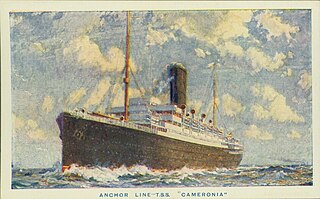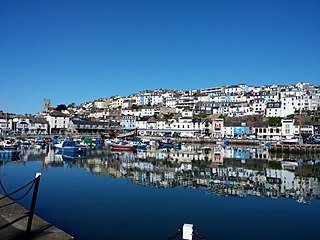Persier was a 5,382 GRT cargo ship which was built in 1918 as War Buffalo for the British Shipping Controller. In 1919, she was sold to Belgium and renamed Persier. Between 1934 and 1941 she also held a passenger certificate. She was driven ashore on the Icelandic coast in a storm in February 1941 which put her out of action for two years. Returned to service in February 1943, she served until 11 February 1945, when she was torpedoed and sunk by U-1017 with the loss of 20 crew.

Belgian Airman was a 6,959 ton cargo ship which was built by Harland & Wolff Ltd, Glasgow in 1941 for the Ministry of War Transport (MoWT). She was launched as Empire Ballantyne and transferred to the Belgian Government in 1942. She was sunk by a German U-boat on 14 April 1945.
Empire Baron was a 5,890 GRT cargo ship which was built in 1926 for Navigazione Generale Gerolimich & Compagnia Società in Anzioni, Trieste, Italy. She was captured by the Royal Navy in 1940 and ownership passed to the Ministry of War Transport (MoWT). She was renamed Empire Baron. She was sold in 1947 to Navigation & Coal Trade Ltd, London and renamed Rubystone. She was sold to a Panamanian company in 1951 and was scrapped in 1960.

Empire Bell was a 1,744 GRT collier which was built by Öresundsvarvet, Landskrona, Sweden as the 2,023 GRT passenger ship Belgia in 1930. In 1940 she was rebuilt as a cargo ship. In 1941, she was damaged by enemy bombing and burnt out. She was salvaged and sold to the Ministry of War Transport (MoWT), repaired and renamed Empire Bell. She was torpedoed and sunk by U-442 on 25 September 1942.

Empire Buffalo was a 6,404 GRT Design 1105 cargo ship which was built in 1919 as Eglantine by Skinner & Eddy for the United States Shipping Board (USSB). She was sold in 1933 to the Lykes Brothers-Ripley Steamship Corporation. In 1940 she was sold to the Ministry of War Transport (MoWT) and renamed Empire Buffalo. She was torpedoed and sunk by U-125 in 1942.
Elisabethville was an 8,851 GRT ocean liner which was built in 1921 for Compagnie Belge Maritime du Congo. In 1930 the company became Compagnie Maritime Belge. She was used on the Antwerp - Matadi route.
Belgian Captain was a 7,041 GRT cargo ship which was built in 1942 as Empire Centaur for the Ministry of War Transport (MoWT). In 1943 she was passed to the Belgian Government and renamed Belgian Captain. Postwar, she was sold into merchant service and renamed Captiane Lambe. In 1960 she was sold to Hong Kong and renamed Ardee, being renamed Alpha Trader in 1964. She served until 1967 when she was scrapped.
SS Empire Chamois was a 5,864 GRT cargo ship which was built in 1918 by Ames Shipbuilding and Drydock Co, Seattle. She was ordered by the Compagnie Générale Transatlantique but was requisitioned by the United States Navy and commissioned as USS West Mount with the pennant number ID-3202 in 1918. She was decommissioned in May 1919 and passed to the United States Shipping Board (USSB) as SS Westmount. In 1927 she was sold to the Dimon Steamship Corporation and renamed SS Pacific Redwood. She returned to the USSB in 1932 and passed to the United States Maritime Commission (USMC) in 1937. In 1940, she was passed to the Ministry of Shipping, passing to the Ministry of War Transport in 1941 and being renamed SS Empire Chamois. She was sold to Astral Shipping Co Ltd in 1946 and renamed SS Granview. In 1949 she was sold to the Compagnia Maritime del Este, Panama and renamed SS Chamois, serving until 1958 when she was scrapped. She was the last Ames-built ship afloat.

Polar Chief was an 8,040 GRT tanker which was built in 1897 as the cargo ship Montcalm. In 1914 she was requisitioned by the Admiralty, serving initially as a troopship. In October 1914, she was converted to a dummy battleship and renamed HMS Audacious. In 1915 she became a depot ship, followed by conversion to a tanker in 1916 when she was sold into Royal Fleet Auxiliary service and renamed RFA Crenella. In 1917, she survived a torpedo attack off the coast of Ireland. In 1919, she was sold into merchant service as SS Crenella.
Inkosi was a 6,618 GRT refrigerated cargo liner which was built by Swan, Hunter & Wigham Richardson Ltd, Newcastle upon Tyne for the Ministry of War Transport (MoWT). She was hired by the Royal Navy in 1940 for use as an ocean boarding vessel, but was sunk in an air raid before she could be used for this purpose. The ship was salvaged, converted to a cargo ship and passed to the Ministry of War Transport (MoWT), who renamed her Empire Chivalry. In 1946 she was sold and renamed Planter. She served until 1958, when she was scrapped.
Belgian Crew was a 7,048 GRT cargo ship which was built in 1942 by Sir W G Armstrong, Whitworth & Co (Shipbuilders) Ltd, Newcastle upon Tyne as Empire Claymore for the Ministry of War Transport (MoWT). She was transferred to the Belgian Government in 1943 and renamed Belgian Crew. In 1946 she was sold to Compagnie Maritime Belge and renamed Capitaine Parlet. In 1960 she was sold to Hong Kong and renamed Ardenode. A further sale to Panama in 1966 resulted in her being renamed Tynlee. She served until 1969, when she was scrapped.

Empire Clough was a 6,147 GRT cargo ship which was built in 1942 by John Readhead & Sons Ltd, South Shields for the Ministry of War Transport (MoWT). She was torpedoed and sunk on her maiden voyage.

Cameronia was a British ocean liner which was built in 1920 by William Beardmore & Co Ltd, Port Glasgow for the Anchor Line. She was requisitioned for use as a troopship in the Second World War, surviving a torpedo attack. In 1953 she was requisitioned by the Ministry of Troop Transport (MoTT) and renamed Empire Clyde. She was scrapped in 1957.

SS Burgondier was a 5,297 ton cargo steamship built to a First World War standard design by Caird & Company at Greenock on the Firth of Clyde. She changed owners and names several times, becoming the Azul, David Dawson, Penteli and finally Brockley Hill. She was sunk by enemy action in 1941.
Hastier was the name of two ships operated by Lloyd Royal Belge.

Western Maid was a 5,760 GRT cargo ship that was built in 1918 by the Northwest Steel Company, Portland, Oregon, USA. She was built for the United States Shipping Board (USSB), but was commissioned into the United States Navy on completion as USS Western Maid, with the pennant number ID-3703. In 1919 she was decommissioned and returned to the USSB. In 1937 she was passed to the United States Maritime Commission. In 1940 she was transferred to the British Ministry of Shipping and renamed Empire Cormorant, passing to the Ministry of War Transport (MoWT) in 1941. In 1945 she was scuttled in the North Atlantic with a cargo of obsolete war matériel.

Scantic was a 326 GRT coaster that was built in 1936 by Noord Nederland Scheepsmakkerij, Groningen as Dr Colijn for a Dutch owner. In 1940, she was transferred to the Ministry of War Transport (MoWT) and renamed Empire Crocus. In 1947, she was sold into merchant service and renamed Stainton. A further sale in 1951 saw her renamed Benwood. In 1955 she was sold to Finland and renamed Monica. A further sale to Sweden in 1957 saw her renamed Mona. In 1963, she was sold to Denmark and renamed Scantic, serving until 7 December 1964 when she foundered in St Georges Channel, United Kingdom.

Empire Drum was a 7,244 GRT cargo ship that was built in 1941 by William Doxford & Sons Ltd, Sunderland, Co Durham, United Kingdom for the Ministry of War Transport (MoWT). Completed in March 1942, she had a short career, being torpedoed and sunk on 24 April 1942 by U-136.

Empire Dryden was a 7,164 GRT cargo ship that was built in 1941 by William Doxford & Sons Ltd, Sunderland, Co Durham, United Kingdom for the Ministry of War Transport (MoWT). Completed in February 1942, she had a short career, being torpedoed and sunk on 20 April 1942 by U-572.

The SS Philippines Victory was the fifth Victory ship built during World War II. She was launched by the California Shipbuilding Company on March 11, 1944 and completed on May 9, 1944. She was built in 113 days under the Emergency Shipbuilding program. The ship’s United States Maritime Commission designation was VC2- S- AP3, hull number 5 (V-5). SS Philippines Victory served in the Pacific Ocean during World War II. SS Philippines Victory was one of the new 10,500-ton class ship to be known as Victory ships. Victory ships were designed to replace the earlier Liberty Ships. Liberty ships were designed to be used just for World War II. Victory ships were designed to last longer and serve the US Navy after the war. The Victory ship differed from a Liberty ship in that they were: faster, longer and wider, taller, had a thinner stack set farther toward the superstructure and had a long raised forecastle.















